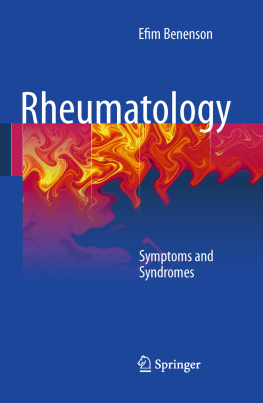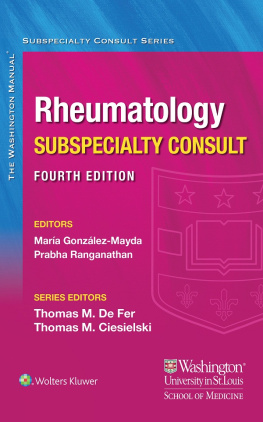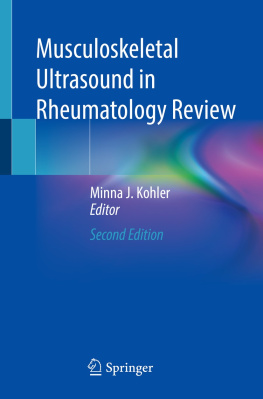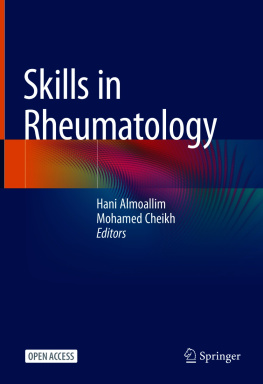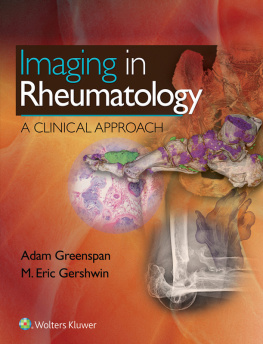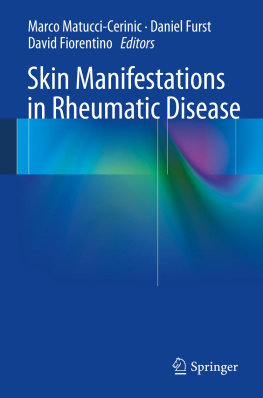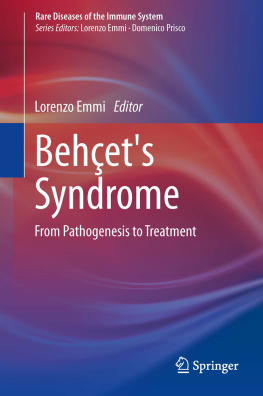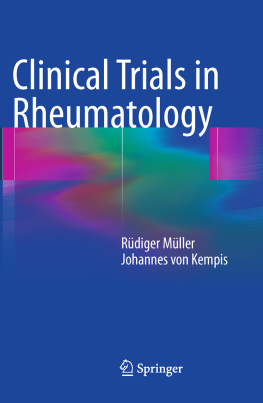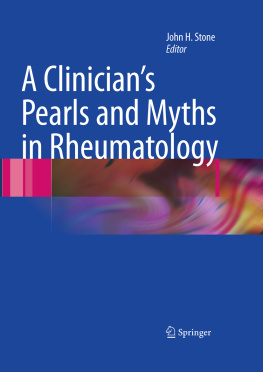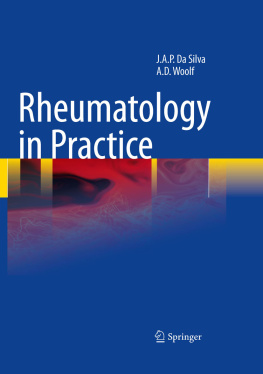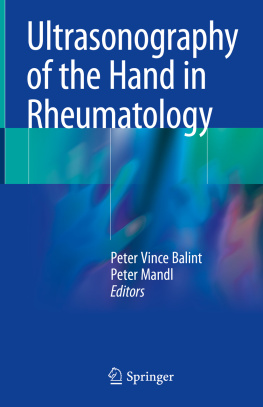1.1 Arthralgia
This leading universal symptom in rheumatology is particularly important for achieving further differentiation, 128c, CS 53), osseous (Chaps. 3.103.11, Fig. 54), vascular (CS 71), functional and psychosomatic (Chap. 3.5, CS 57, 59, 61), or metabolic ( Fabrys disease) origins.
Commonly occurring arthralgias have underlying functional and psychosomatic causes and the following pattern:
Mostly in women, mono-/oligoarticular (hands, feet)
Unstable, short-term, varying intensity
Not movement induced, accompanied by vasospastic reactions
Improvement after intake of sedatives
Such a pattern, of a highly psychosomatic nature, is also seen with back pain (cervicalgia, dorsalgia, and lumbalgia), chest pain ( thoracodynia ), and pain in the Achilles tendon ( achillodynia ). The diagnoses of such syndromes should be regarded as exclusion diagnoses, that is, they should only be made if all (and definitely all) organ-related diseases involving the same symptoms have been ruled out. This also applies, incidentally, to diffuse joint and muscular pain, which cannot be defined morphologically and is identified as fibromyalgia , generalized tendomyopathy , or a global pain syndrome (Chap. 3.5). Among the entire population, roughly three quarters of all chronic pain syndromes are caused by a disease of the musculoskeletal system (German Society of Rheumatology/DGRh/Healthcare Commission, June 2008, available on the Web). Such symptoms, which cannot be clearly defined, have recently been adopted as the diagnosis pain disorder with somatic and psychological factors in ICD -10 ( International Classification of Diseases ) under somatoform disorders.
Fibromyalgic and inflammatory (see below) arthralgias are almost impossible to differentiate in one patient. For this reason, more recent RA studies ask patients to complete two specific questionnaires aimed selectively at RA and fibromyalgia . Patients with high grade fibromyalgia should not be classified in the RA studies on account of the difficulties with assessing efficacy described below.
Otherwise, patients with arthralgias and other local or diffuse pain symptoms who usually can be denoted as having non-rheumatic diseases, should initially be cared for by their general practitioner and do not necessarily require primary rheumatological investigation.
The demarcations between inflammatory and noninflammatory arthralgias can also be regarded as a problem in everyday rheumatology, which cannot always be solved. This applies in particular if there is an inflammatory disease, where the main question is the type of pain which predominates.
This is illustrated by CS 57, for example, wherein a male patient with PsA but minimal activity had severe polyarthralgias with restricted movement in the hands. As a result he was placed on sick leave for a number of months and ultimately was discharged from cure therapy due to an attack of his underlying disease. This could not be confirmed by subsequent examinations, however. The Remicade therapy (three infusions), applied with the aim of differentiating between inflammatory and noninflammatory pain, had little effect.
The same difficulties with differentiation can be seen in CS 59 and 61.
Stable arthralgias with a specific pattern over a certain time period have greater clinical relevance if they are of an inflammatory and mechanical nature. Such arthralgias should at least undergo rheumatological or orthopedic investigation. In such an event there could be a nasty surprise waiting, as in the case of Fig. 54, where a bone tumor was ultimately identified in the presence of severe arthralgia (with later swelling), and postoperatively as a stress fracture , or in the case of one of our female patients, aged 42, in whom massive polyarthralgia preceded retrobulbar granuloma , as shown in Fig. 96. Arthralgia of the temporomandibular joint causes local pain, which may extend to the face and head.
Inflammatory arthralgias (articular and periarticular) have the following features:
Oligo-/polyarticular
Stable, intensive, and long-term (up to 24 h) pain
Mostly nocturnal, early morning
Morning stiffness
Improvement on exercise
Such arthralgias must mostly be ascribed to arthritis.
Mechanical arthralgias are characterized as follows:
Mono-/oligoarticular, large or small joints, not intensive to begin with
Pain after static and mechanical strain
Pain mostly on initial movement (run-in pain) and in the evenings
Improvement with rest
Such a pattern of arthralgia is very closely linked to the initial stage of degenerative joint disease ( osteoarthritis [OA] ) or spinal disease ( osteochondrosis ).
When both patterns are combined and the severity of the muscular pain, the adaptive posture and restricted movements are not proportionately related to the conventional clinical picture, an osseous cause should be considered namely, aseptic bone necroses (Chap. 9.9, CS 44) or stress fracture (Fig. 54); more extensive, appropriate imaging procedures (bone scintigraphy, MRI) should be undertaken. Most frequently, idiopathic necroses of the femoral head ( Perthes disease) or other causes and localizations (e.g., knee primary or secondary Ahlbcks disease, tarsal bone Schlatters disease, carpal bone Khlers disease) are involved. Aseptic necroses gain in importance during intensive cortisone therapy and immunosuppression, often in RA or ReA (CS 44, Fig. 121), SLE or patients with a kidney or liver transplant.

